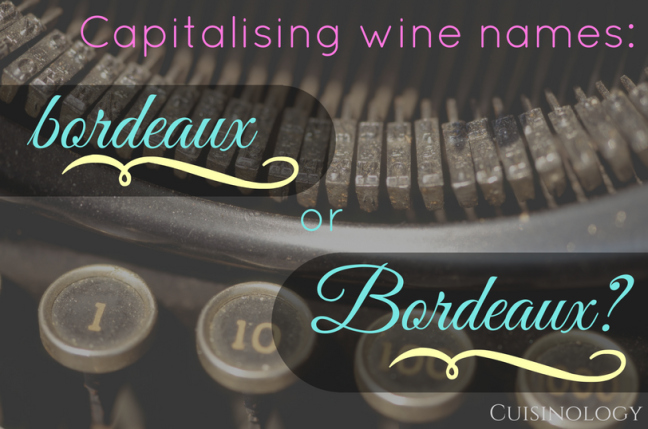My last two articles involved quite a lot of wine terminology, and while writing them, I realised that I’m never sure how and when to use the upper case. I would write ‘Pinot Noir’ in the middle of a sentence, and the capitals seemed out of place; then I would switch to lower case, but then ‘champagne’ and ‘burgundy’ looked all wrong. So, when writing about wine grapes, blends and styles, should we use capitals or not?
This post by William Safire for the New York Times goes into great depth on this topic and confirms what my inner grammatical compass was trying to tell me: the names of some grapes and wines should be capitalised, while others should not, and it all depends on where the name comes from. Below, I’ve boiled down the information from Safire’s insightful article into a handy decision-making tool: if you spend a lot of time writing about wines, feel free to download this resource for future reference.

Not every publisher follows these rules: The Guardian uses lower case for all wines and grapes, while De Long opts for capitalisation in every instance. But in most sentences (lists, wine labels and other fragments don’t follow the same grammatical rules), all proper nouns should be capitalised, including geographical locations and branded product names, while other nouns should use the lower case.
Of course, this only works if you happen to know the etymology of every grape variety there is… So I’ll be back soon with a list of the most common wine types and how they should be handled, according to this chart.

One thought on “Capitalising wine names: bordeaux or Bordeaux?”